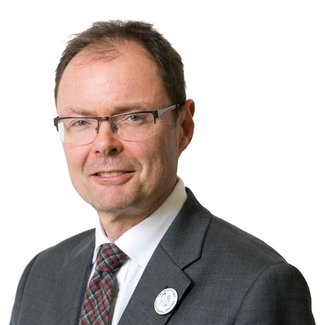Caring for our most vulnerable residents - so much more than a virtual ‘check in’

Dr Matt Hoghton, GP and Clinical Advisor to the Digital Primary Care programme shares his personal experience of providing virtual GP led care to nursing and care homes.
Like my colleagues across England, almost overnight I had to adapt my own service, both as a GP and a member of a general practice. With the move to total triage, video consultations and remote working taking some getting used to, colleagues across NHSX and NHS England and NHS Improvement’s Digital First Primary Care team have worked solidly, providing practical support, tools and guidance to smooth this transformation, including recent guidance on the principles of safe video consulting in general practice.
Moving to video consultations and virtual 'check ins'
Our practice administrator organises the virtual ‘check ins’ and video consultations, ensuring as much as possible they fit around residents’ and care team’s routines. Prepping me with the names of all of my patients in each home, in alphabetical order, including any new patients.
While I was keen to appear confident to my patients, so they could be reassured, I admit I felt anxious before my initial set of video consultations. While I had given additional support by phone, I had never really utilised video with care homes before. Experimentation with tech and platforms helped to establish the most effective solutions for each home. We had to initiate some fixes and workarounds too, for example if a solution isn’t working in one browser, it might work in another, or after updating the software or operating system.
Products that launch easily from my phone, are working remarkably well in buildings where signal strength is good and remove the need for webcams. In addition to established video consultation platforms, I’ve also seen the Facebook Portal pilot in action and used internet based video calling products following the NHSX guidance for healthstaff.
The many advantages of video consultations with the care sector
Despite my face filling the screen, video actually feels more natural than speaking behind my PPE. My patients can see my mouth, facial expressions and also the simple hand gestures I tend to use such as waving and thumbs up. In addition to being welcoming or even bringing a smile to people’s faces, these non verbal cues, gestures and facial expressions can help to provide reassurance, increase understanding and help to build trust. I’ve found this is particularly important for my patients with learning disabilities. It’s also proving important when providing remote support to care staff, we can see when to give each other the space or prompts to share more or ask a follow-up question.
Technology is also supporting ‘best interest’ meetings, with relatives or guardians joining alongside social care and health staff. Where I was often present at these meetings with a patient summary sheet, I now have quick and easy access to the patient’s medical records and correspondence.
I can also see a considerable number of social care patients in a relatively short time, spend less time traveling and donning and doffing PPE. It is also reducing the pressure on supplies of PPE. I’ve also found video consultation particularly good for palliative care, mental health care, musculoskeletal problems as the video provides a good impression of the location and extent of the problem as well as an opportunity to see the overall health of the patient.
The future of virtual care and support
Virtual check ins and video consultation have a vital role in providing continuity of care and will increase both the quality and quantity of care, for residents of closed facilities such as nursing and care homes.
But now and beyond the pandemic, we need to see widespread improvement of inter connectivity. A range of internet connectivity offers are now available to care homes and care providers, but guidance is needed on how to boost the strength of both wifi and mobile signal throughout these buildings - some which have solid stone walls. I’m also looking forward to seeing the results of the various pilots that are in full flow to test further digital transformation for the sector.
In my experience, care teams and staff are ready to work in partnership with health professionals. They were essential in making virtual services an effective solution. Showing a willingness to work in new ways and to facilitate our video consultations and weekly ‘check ins’. Care staff might be interested in the range of materials written by the East of England team to support them in offering video consultations. I am looking forward to supporting the NHS’s next wave of support for the sector.